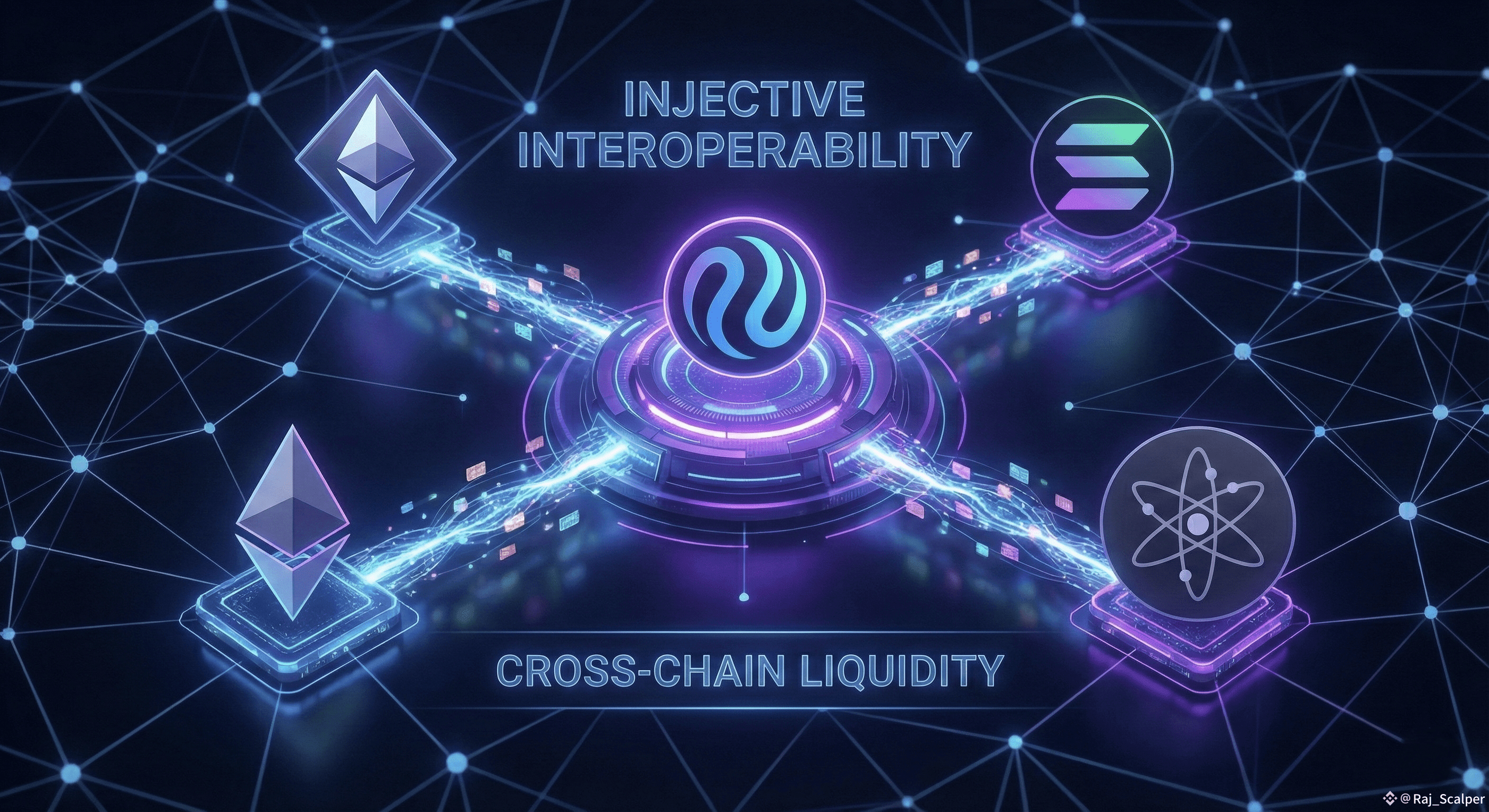In the crowded landscape of Layer-1 blockchains, it is easy to get lost in the noise of "Ethereum Killers" and generic smart contract platforms. However, true innovation often happens where specialization meets scalability. This is where @Injective separates itself from the pack. Unlike general-purpose chains that try to be everything to everyone, Injective was architected from day one with a singular, laser-focused mission: to be the absolute best blockchain for Web3 finance.
The Architecture of Speed and Precision
At its core, Injective utilizes the Cosmos SDK, but it has been supercharged for financial applications. We are talking about lightning-fast, sub-second block times. For a trader or a developer building a DEX, speed isn’t just a luxury; it is a necessity to prevent slippage and ensure efficient execution. But speed without security is meaningless. Injective offers instant transaction finality, meaning that once a trade is executed, it is irreversible and secure immediately—a massive advantage over probabilistic finality found on other major chains.
The Secret Weapon: Fully On-Chain Order Books
Most DeFi ecosystems rely heavily on Automated Market Makers (AMMs). While AMMs are great, they lack the precision required for institutional-grade trading. Injective revolutionizes this by providing a distinct core primitive: a fully on-chain Central Limit Order Book (CLOB).
This is a game-changer. It allows developers to build decentralized applications (dApps) that offer the same sophisticated user experience as centralized exchanges (CEXs) but with the transparency and custody of DeFi. By sharing this liquidity across the ecosystem, Injective creates a plug-and-play environment where new applications can bootstrap liquidity instantly.

Solving the Interoperability Dilemma
We live in a multi-chain world, and Injective understands this better than anyone. Through its native integration with the Inter-Blockchain Communication (IBC) protocol and sophisticated bridges like Wormhole, Injective serves as a massive financial gateway. It seamlessly connects liquidity from Ethereum, Solana, Cosmos, and other major networks. This isn't just about moving tokens; it's about creating a unified financial layer where assets can flow without friction.

Tokenomics That actually Work: The Burn Auction
Let’s talk about value accrual for INJ. Many projects suffer from inflationary tokenomics that dilute holders over time. Injective flips this script with one of the most aggressive deflationary mechanisms in the industry: The Burn Auction.
Every week, 60% of all fees generated from dApps built on Injective are collected and auctioned off. The winning bidder pays in INJ, which is then permanently burned—removed from the supply forever. As ecosystem activity grows, the scarcity of the token increases. It is a direct correlation between network usage and token value, creating a sustainable economic loop that rewards long-term believers.

The Institutional Bridge: RWA and Volan
With the recent upgrades, including Volan, Injective is positioning itself as the premier home for Real World Assets (RWAs). By offering customizable permissions and compliance modules directly at the protocol level, institutions can tokenize assets like real estate, treasury bills, or stocks on-chain while adhering to regulatory standards. This bridges the trillion-dollar traditional finance (TradFi) gap with the efficiency of DeFi.
Conclusion: The Financial Layer of the Internet
Injective is not just another blockchain; it is a specialized financial operating system. With zero gas fees for users on certain dApps, MEV-resistance to prevent front-running, and a developer experience that provides financial modules out of the box, it is building the rails for the next generation of money.
As we move toward the next bull cycle, utility will drive valuation. And in terms of pure financial utility, #injective is in a league of its own. The future of finance is here, and it is built on Injective.



